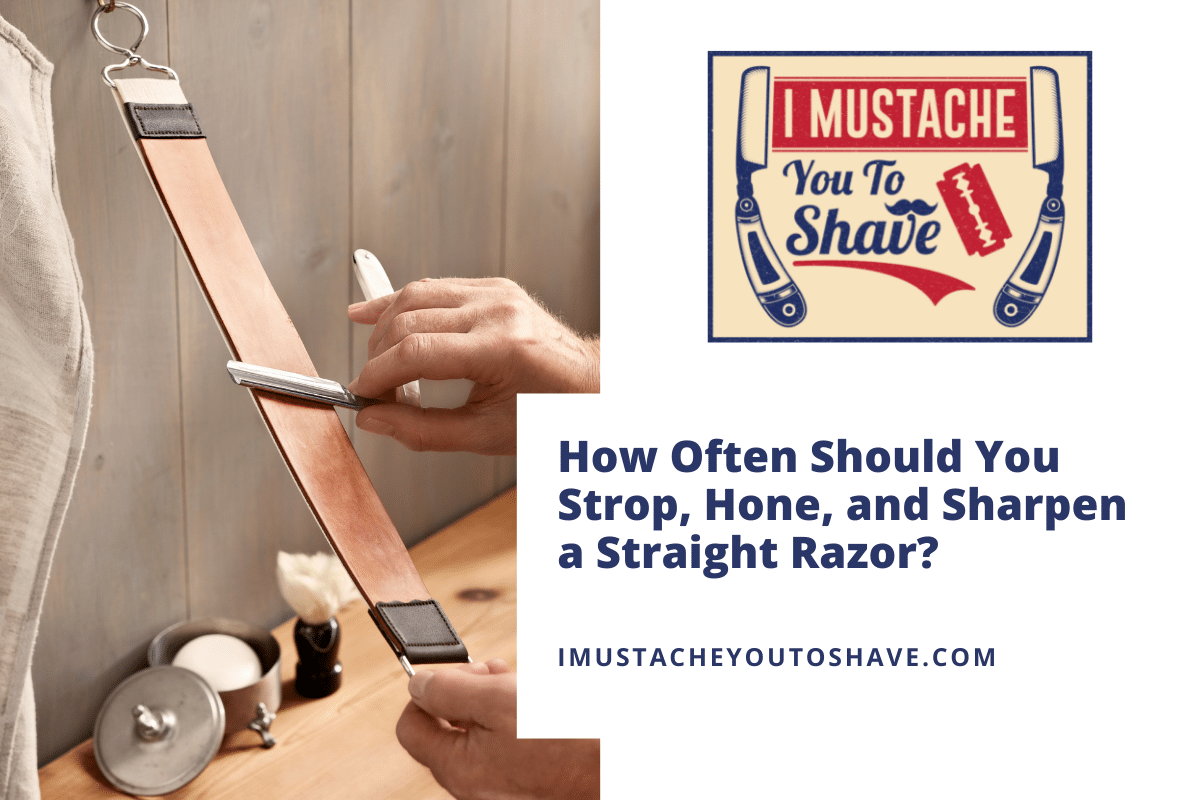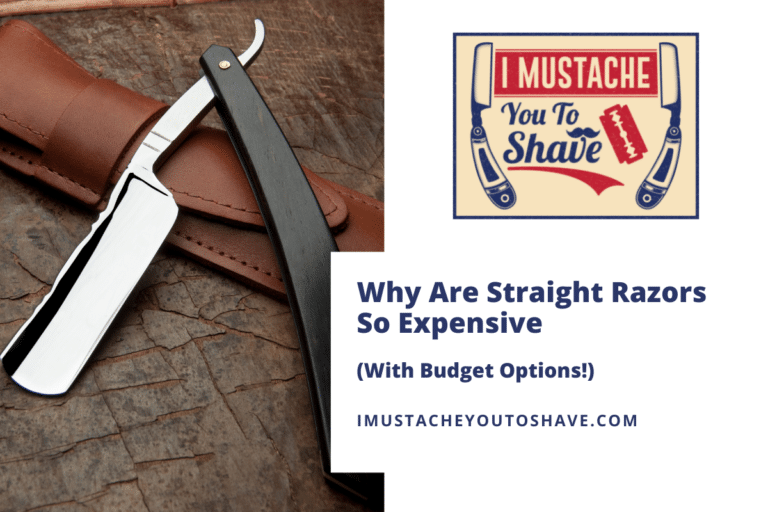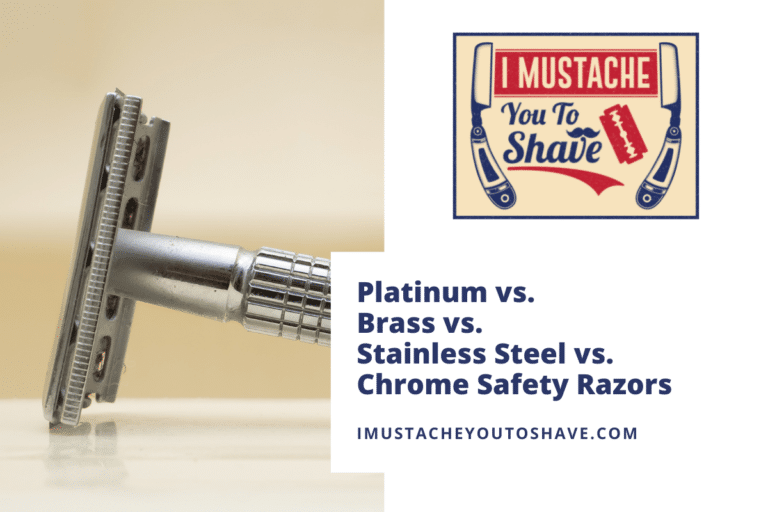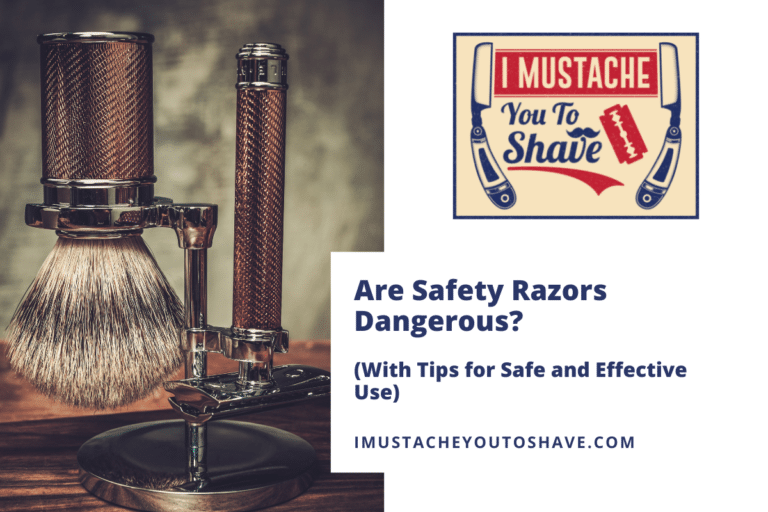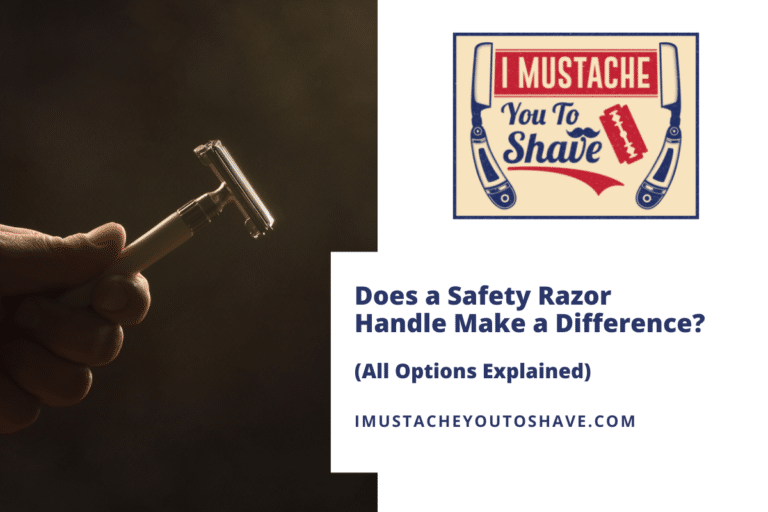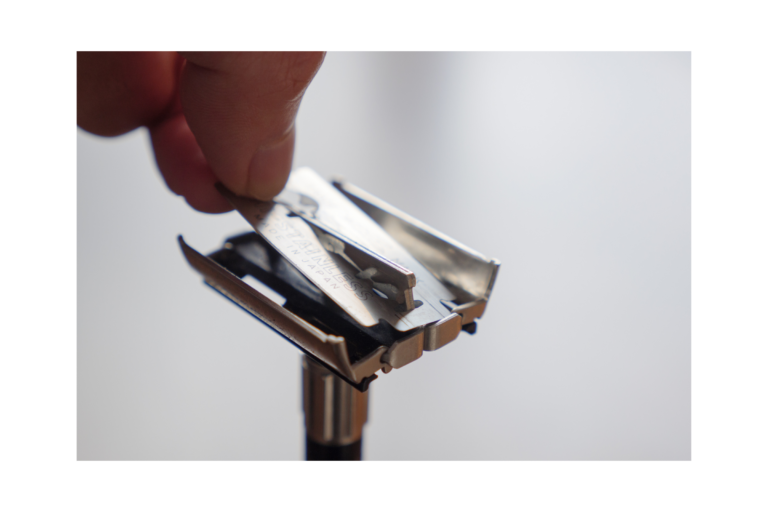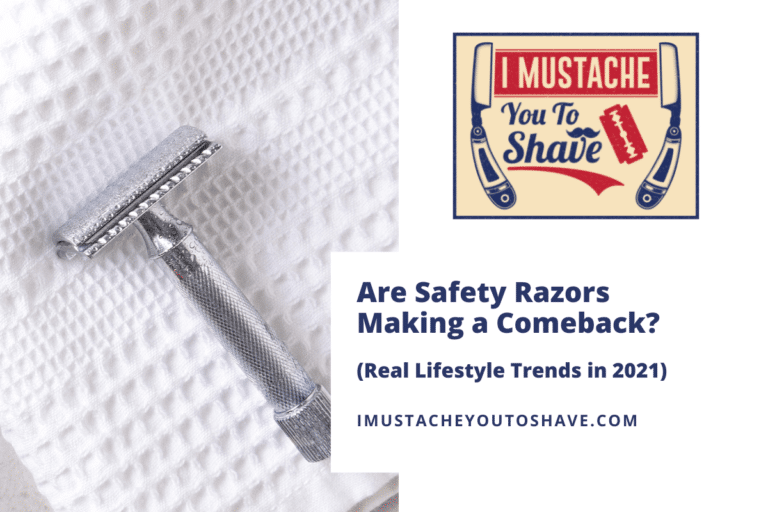How Often Should You Strop, Hone, and Sharpen a Straight Razor?
Your brand new straight razor can last generations if properly maintained. But what does “properly maintained” really mean? How often do you need to sharpen it?
Straight razor maintenance is key to lasting performance. Stropping polishes and straightens your razor’s edge and should be done every 1-7 shaves. Honing restores the edge and is best done every 60-70 shaves or about every 6 months. Sharpening should be done by a professional as needed (if the razor is dropped or otherwise damaged, for example).
Keep reading to learn all about the different levels of straight razor maintenance and how – and when – to perform them.
How do you maintain a straight razor?
You may not think of your facial hair as being particularly hard, but stubble will dull even the sharpest steel over time.
Returning the blade to a homogeneous edge will require some dedicated maintenance. Stropping, honing, and sharpening will keep the razor preserved and shaving for decades.
A 2020 study conducted by MIT discovered that human hair dulls blades by causing microscopic chips to break away from the metal. This happens in three ways: when the razor contacts hair at an angle, when the blade is heterogeneous in composition, and when the weak point of the heterogeneous composition contacts the hair. Basically, hair causes tiny cracks in the metal which leads to chipping that turns straight edges into a ragged mess.
The microscopic edge of a razor periodically needs to be straightened. Leather strops will straighten, smooth, and polish a cutting edge between shaves. When stropped properly, a straight razor will retain its performance for about 6 months.
A razor will need to be honed from time to time to reestablish that microscopic cutting edge. Honing works by removing small amounts of metal through the use of whetstones. If the cutting edge cannot be honed then it may need to be sharpened again.
“Sharpening” and “honing” are terms that are often used interchangeably but sharpening requires larger amounts of metal to be removed in order to re-establish the cutting edge. It is essential to have a precisely sharp edge to shave comfortably and effectively. If the initial sharpening is off no amount of stropping or honing will be able to correct it.
How many shaves is a straight razor good for?
Metal composition, hair density, and shaving frequency will determine the lifespan of razors’ cutting edge.
A straight razor can be used for 1-7 shaves before requiring any maintenance at all. Carbon steel blades benefit from oil and polish after each use to prevent staining.
Not all straight razors share the same manufacturing techniques therefore the metal is different from brand to brand. Some razors are made with softer metals, various alloys, and various grindings. Stainless steel and carbon steel have different properties while shaving and while honing. Both styles of blades require different levels of care.
Most steel blades will resist rust but carbon steel is prone to staining. Stropping with leather or even canvas polishes the grime away keeping the blade sleek and clean.
How often do you need to strop your straight razor?
Once mastered stropping will become a quick pre-shave ritual.
Ideally, a straight razor will be stropped prior to each shave. It is important to remember that a strop does not sharpen a razor but polishes and straightens the shaving edge making the best shave possible between honing.
The selection of a strop is as important as the selection of a razor. A variety of leather or some synthetic material with varying properties is available and also different stropping mechanisms. Some feature cloth strips for additional polishing.
The common denominator for all strops is the leather strap. Here are several examples of strop styles:
- Hanging Strop – This is the most common strop. It is a strip of leather with a handle on one side and a ring on the other so that the strop may be hung.
- Paddle Strop – This is a leather strop affixed to a paddle and used much the same way as a hanging strop.
- Bench Strop – This strop is attached to a heavy base. It is designed to be placed on a counter instead of being held.
- Loop Strop – This is an uncommon strop. The leather is held taught by a device that can adjust the tautness of the strop.
Keep in mind that leather is used to correct the razors.
How to strop a straight razor
Errant stropping can undo some time-consuming sharpening, and improper stropping can lead to rough shaves and frequent honing.
To strop your straight razor:
- Hold the strop parallel to the floor and taut. If using a bench strop make certain that it is on a flat sturdy surface.
- Lay the straight razor blade on its side flat against the leather with the cutting edge towards you.
- Stroke the blade the full length of the strop stopping about an inch from the end to prevent the blade from striking anything other than the strop leather. The only pressure applied should be the weight of the razor.
- Flip the cutting edge of the blade away from you. Note: Always flip with the spine of the blade. Flipping on the cutting edge can damage the edge and undo all of the stropping and will cause dulling or rolling of the blade. The cutting edge could also cut the leather which could also damage the blade edge.
- Pull the razorback towards you using just the weight of the razor to apply pressure
- Once you reach the original starting position flip the razor along the spine to once again face towards you.
- Repeat the stropping for 20-40 strokes per side until the razor is ready for a shave.
How often do you need to hone your straight razor?
Honing is a skill that comes with practice. It is important to take your time and carefully follow instructions as a beginner. With experience, sharpness can be felt and even heard by some experts.
A straight razor should be honed after 60-70 shaves or roughly every 6 months. If your blade requires honing more frequently then the stropping technique should be reevaluated.
Honing is the process of restoring an edge, by use of whetstones or other devices, to a blade losing its sharpness. The ideal whetstone grit for honing will be working from #4000 to #8000 to correct the edge. Stones that are more coarse will remove more metal and should be reserved for sharpening which will be discussed further on.
Professional sharpening services are also available ranging from $10-$30 with potential additional fees for more serious needs. Many online retailers will hone without a fee if the blade were purchased through their site. This should always be considered as an option for beginners – especially when using expensive blades.
Vintage blades should also be inspected by professionals for sanitization and restoration especially if the edge appears damaged at all.
How to hone a straight razor
You’ll probably only need to hone your straight razor a handful of times a year, so you should take time and do so carefully and without rushing. Incorrect honing can lead to requiring professional sharpening to correct your edge.
To hone a straight razor:
- Position the whetstone on a flat unobstructed surface along with a water source such as a sink, bowl of water, or spray bottle. Begin with a coarse #4000 grit whetstone.
- Lay the side of the razor atop the whetstone with the cutting edge pointed away from you.
- Place the index and middle fingers of each hand atop the edge of the razor on both sides to ensure the razor stays flat.
- Exactly like stropping, push the blade towards the end of the lubricated whetstone with only the weight of the blade applying pressure.
- Lubricate the whetstone and carefully flip the blade on the spine so that the cutting edge faces toward you.
- Apply the same minimal pressure and draw the blade towards you.
- Repeat as necessary.
- Graduate to less coarse stones until #8000 grit is reached. The cloth strop can be used at this point to help remove microscopic metal filings.
Some stones should be soaked prior to use but all should be lubricated while used, refer to the manufacturer’s directions for specifics about your whetstone.
How often should you sharpen your straight razor?
Sharpening is much like honing but will begin with a much more coarse stone. Sharpening is a very precise process that establishes the cutting edge while honing and stropping are techniques to maintain the sharpened edge.
Sharpening is best reserved for blades in bad shape. Sharpening establishes the edge of the blade that stropping and honing seek to maintain. Sharpening should be considered when a blade is initially purchased, if the razor is dropped or damaged, or if honed incorrectly.
Very seriously consider professional sharpening services to establish a cutting edge. Experts will inspect and determine the best edge possible for your blade. These experts also understand differences in metallurgy, hollowness in grinds, and bevel. The razor will be returned with the edge it was intended to have.
How to sharpen a straight razor
If you choose to sharpen your straight razor yourself, do so with care as it is possible to ruin your razor if you use the wrong angle or pressure.
To sharpen your straight razor:
- Position the whetstone on a flat unobstructed surface along with a water source such as a sink, bowl of water, or spray bottle. Begin with a coarse #1000 grit whetstone.
- Lay the side of the razor atop the whetstone with the cutting edge pointed away from you.
- Place the index and middle fingers of each hand atop the edge of the razor on both sides to ensure the razor stays flat.
- Exactly like stropping, push the blade towards the end of the lubricated whetstone with only the weight of the blade applying pressure.
- Lubricate the whetstone and carefully flip the blade on the spine so that the cutting edge faces toward you.
- Apply the same minimal pressure and draw the blade towards you.
- Repeat as necessary.
- Graduate to less coarse stones until #8000 grit is reached. The cloth strop can be used at this point to help remove microscopic metal filings.

